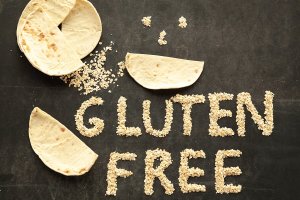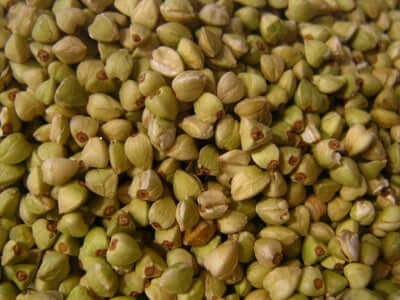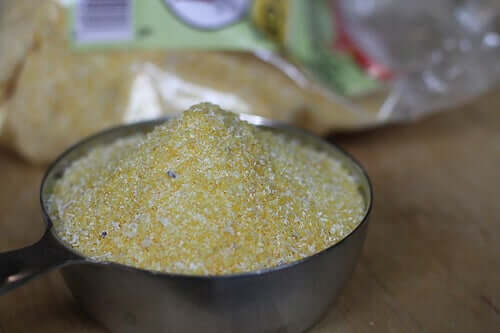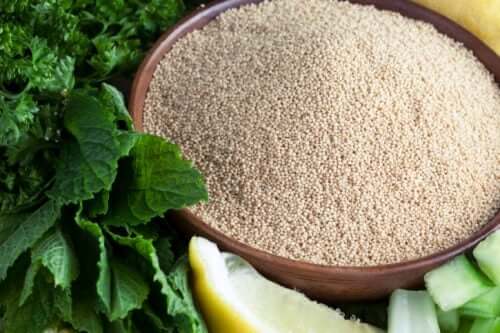The Eight Best Types of Gluten-Free Pasta

Celiac disease causes inflammation in the small intestine due to permanent gluten intolerance. Its treatment involves modifying eating habits. Bearing in mind the many people who suffer from this disease or some form of gluten intolerance, we’d like to share the best types of gluten-free pasta.
The main difficulty with those diagnosed with celiac disease or some form of gluten intolerance is that many foods have gluten – in fact, much more than the ones who don’t, an unknown fact to most. Below, discover the types of gluten-free pasta you can include in your diet.
How to know if any pasta has gluten

Generally, pasta is made with wheat, a grain with gluten. However, nowadays, you can find different varieties of gluten-free pasta in any supermarket. To make sure that the noodles or stuffed pasta you’ve chosen are gluten-free, you should do the following:
Check if it has the label “gluten-free”
On the front of the package, you should see a label with the words “gluten-free” or “no gluten”. Instead, if you see the words “low in gluten” on the label, it’s best not to consume that food.
Check the ingredients
The best foods for people who suffer from celiac disease to consume are those that have the “gluten-free” label. For greater safety, get into the habit of checking the ingredients.
Reading food labels is essential to avoid eating foods that contain gluten. Know about the ingredients made from cereals and food additives. However, the most advisable thing is to avoid processed foods in general.
Types of gluten-free pasta
Below, discover the different types of gluten-free pasta you can find in supermarkets:
1. Buckwheat pasta

This contains high-quality protein in addition to essential amino acids. In this regard, it contains vitamin K, its glycemic index is low, and it’s gluten-free. In supermarkets, you can usually find pasta made from buckwheat. However, if you prefer, you can make your own homemade buckwheat pasta.
For the recipe, you’ll need:
- 300 g of buckwheat flour
- 100 g of rice flour
- 4 eggs
- Warm water
- Salt
Mix the flours, add the salt, and add the eggs. Knead for approximately 15 minutes until you get a smooth dough. Add warm water, if necessary. Let the dough rest in the fridge for half an hour. After that, you can fill your pasta or cut your noodles!
2. Rice
Rice flour is perfect for thickening sauces and making Chinese noodles. It’s worth noting that, since it doesn’t contain enough protein, it isn’t recommended for doughs that require washing. However, since it comes from rice, it retains many of its benefits, such as B vitamins and minerals.
The good news is that since Chinese food is highly valued and very popular around the world, it isn’t difficult for you to find rice noodles in any medium or large supermarket.
Discover: Is it Right to Include Gluten-Free Products in Your Diet?
3. Corn, an easy gluten-free pasta

One of the main substitutes for wheat flour is corn flour. Since it’s rich in minerals, carbohydrates, and vitamins A, B, and E, it’s perfect for making bread, thickening sauces, or making pasta.
If you can’t find this pasta in the supermarket, you can make it with:
- 300 grams of cornflour
- 1 cup of water
- 2 eggs
- 1 tablespoon of extra virgin olive oil
- 1 pinch of salt
Place the flour in a bowl, add the salt and the egg, and mix until you get a smooth dough. Add the olive oil and water little by little and continue kneading. Let the dough rest for 30 minutes in a warm place. Then, make the gluten-free pasta of your choice.
4. Chickpea, a flavorful gluten-free pasta
One of the best types of gluten-free pasta is made with chickpea flour. This flour is very popular in India and the truth is that the flavor of this legume really spruces up pasta.
You can make some gnocchi at home with:
- 3/4 cups of water
- 5 cups of chickpea flour
- 1 pinch of salt and pepper
- 2 tablespoons of margarine
Bring the water to a boil and add the flour, salt, and pepper. Remove from heat and continue mixing with a fork. Add the margarine. When you get a homogeneous dough, take it out of the pot and place it on the table. Stretch it and shape your gnocchi.
5. Green peas
Green peas contain vitamin C, protein, thiamine, folate, and niacin, among other nutrients. Thus, green pea flour retains these great health benefits and is gluten-free! Although green pea pasta isn’t as common, some brands market it.
6. Quinoa
In recent years, quinoa has become very popular. That’s no surprise, as it contains proteins, amino acids, fiber, and carbohydrates. Look for quinoa noodles at your supermarket.
You don’t want to miss this article: Gluten-free Recipes Full of Carbohydrates for Celiacs
7. Amaranth, a special gluten-free pasta

This stands out because it’s very rich in protein. In fact, 15 to 18% of the total seed is protein. Also, it’s rich in folic acid and vitamins A, B1, B2, B3, and C. It’s perfect for making gluten-free doughs and bread. You can find amaranth gluten-free pasta in some supermarkets and specialty stores.
8. Millet
Finally, this grain is rich in iron, phosphorus, and magnesium. On the other hand, it provides more protein than wheat, rice, or corn flours. It’s very good for making doughs, either pasta or bread. You can find millet pasta in specialty stores.
In conclusion, these are the main varieties of gluten-free pasta. In fact, you can also find combined varieties, such as buckwheat and corn, corn and rice, or chickpea and corn, for example.
Are you ready to try these delicious gluten-free pasta?
All cited sources were thoroughly reviewed by our team to ensure their quality, reliability, currency, and validity. The bibliography of this article was considered reliable and of academic or scientific accuracy.
- Fundación Española de Nutrición. Guisante. http://www.fen.org.es/mercadoFen/pdfs/guisante.pdf
- Quinua.pe. Quinua – Valor nutricional. http://quinua.pe/quinua-valor-nutricional/
- Asociación Celíaca del Uruguay. Harinas sin gluten y sus propiedades nutricionales. http://acelu.org/index.php/informacion/harinas-sin-gluten-y-sus-propiedades-nutricionales/
- Palacio, F. (2010). Celiaquía. FMC Formacion Medica Continuada En Atencion Primaria. https://doi.org/10.1016/S1134-2072(10)70053-0
- García, E. (2006). Alimentos libres de gluten un problema aún sin resolver. Invenio: Revista de Investigación Académica, ISSN-e 0329-3475, No. 16, 2006, Págs. 123-130. https://doi.org/10.1109/PLASMA.1997.604390
This text is provided for informational purposes only and does not replace consultation with a professional. If in doubt, consult your specialist.








